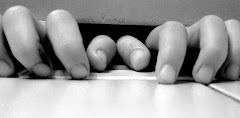
Philosophers sometimes understand themselves as that group of people who through reason alone peer behind the transitory world of appearances to understand things as they really are. Apparently, the ordinary poor slobs who compose the vast majority of humanity live in the world of the cave--the world of appearances—and go about their lives altogether oblivious to the deeper reality that holds up or transcends what they perceive. Through thought alone, philosophers appertain reality as it is rather than as the illusory world of appearances that ordinary folks blithely experience.
Or so they would have us believe.
But I doubt it. My sense is that people naturally and automatically look past appearances to mentally organize and construct their perceptions into meaningful concepts—into “reality.” They do so without the benefit of philosophy. They do so without trying. In fact, they can’t help but do it.
Any toddler can identify a dog as a dog. But asking the toddler to pull back from the concept of doggyness that she is implicitly relying upon to actually describe the difference in appearance that distinguish various breeds of dogs and that distinguish dogs from, say, cats is to ask something of the child that is well beyond its capacity. It seems we understand what a dog is first, and then only later (maybe) can we note what we perceive about that dog that helps us make that determination. Obviously appearances are critically important for us to recognize a dog as a dog, but it’s remarkable how much variation of appearances allow us to still recognize a dog as a dog. Dogs have legs, true, but most of us can still recognize a two-legged dog as a dog. When I was a boy I was traumatized by seeing a decapitated dog with its head on one side of a railroad track and the body on the other side of the rail. Looking back now at that horrible discovery, I note that when I was looking only at the body I knew the dog was a dog. And looking only at its poor severed head, I knew the dog was a dog. I had never seen a headless or bodiless dog before, but I still recognized it as a dog.
What’s interesting is that by ignoring appearances and going directly to what the thing is (the goal of philosophy) we run the risk of distorting the thing itself. Consider how a child draws a piano. She’ll use one color—black—and basically draw a blocky outline of a piano and then fill in the spaces with a uniform blackness. But then if one looks at a piano as one would find it in a concert hall, one does not see just blackness. One sees odd sheens of light and bizarre and ever changing reflections. True, the piano’s blackness can be seen, but for as much as we see the blackness in the piano we think of it as black simply because we block out what we actually see and allow our concept of the piano to guide our mental constructions.
In so doing we distort the reality of the thing we think we understand. God doesn’t do that. At least most of the time he doesn’t. Psalm 147 says that God names all the stars. Now that’s understanding each thing in an individual way. Persons can’t do that. It takes considerable education in astronomy for a person to understand how differences within stars make a crucial difference for how they behave. That God names each of the stars reveals his staggeringly powerful mind, but making distinctions based upon appearances is even hard for him. For example, in Leviticus Chapter 11, we are told of God’s rules concerning the eating of unclean birds:
"And these are they which ye shall have in abomination among the fowls; they shall not be eaten, they are an abomination: the eagle, and the ossifrage, and the ospray, And the vulture, and the kite after his kind; Every raven after his kind; And the owl, and the night hawk, and the cuckow, and the hawk after his kind, And the little owl, and the cormorant, and the great owl, And the swan, and the pelican, and the eagle, And the stork, the heron after her kind, and the lapwing, and the bat."
Okay, so everyone goofs from time to time.
In contrast to philosophy, which discounts the world of appearances, art—especially contemporary art—invites the viewer to attend carefully to what the viewer is seeing. It invites the viewer to not move hastily to a general glib understanding of the thing, but to attend to the particulars of the thing. In interpreting a piece of art (here I’m thinking of paintings in particular) the first thing the interpreter should do is stop, pause, and simply look. She should note what she is seeing and not jump immediately to its “deeper” meaning for what it signifies. What drives so many people “batty” (sorry) about contemporary art is that sometimes (but not always) it does not ask the viewer to look beyond itself for the purpose of telling a story or conveying an idea or making a statement beyond the art world itself. Sometimes (but not always) the artist attempts to prompt the viewer to simply look at the art itself, to appreciate form independently of function. To appreciate it as a composition. Therefore at least to some degree an important goal of the contemporary artist is to simply bring people down back into the cave because, damn it, there’s interesting things going on down there.
Appearances are worth attending to because our senses are worth attending to. We are embodied, and we should have less shame about our perceptions than what philosophy would have us feel. And in fact distinctions of appearance between things matter. Without noting those distinctions, we cannot fully appreciate the mind-boggling variety and diversity of creation itself.
The photo. One thing I love about going to a large city like Chicago or NYC is the remarkable degree of visual replication one sees. Not exactly replication because that would be boring. But visual echoes. Building after building towering over us. And with so much reflective glass one looks into a building and sees what’s behind oneself. We can see the same building by looking in four different directions. It’s fabulous and exhilarating. And yet without the benefit of engaging in platonic dialectic we immediately and effortlessly train our eye to look past these reflections, these images, to see the “real” thing we’re looking at, the building I can touch with my hand. Like painting, photography requires that the photographer be mindful of images and appearances—in effect, to visually convert the three-dimensional world that our mind constructs to the two-dimensional world that we see. Both this photo and the photo below were made by pointing the camera into a window. The “mask” and other objects are inside the building that I’m facing; Harvey and the cars and images of buildings and the sky are “behind” me and captured by the reflection in the window.
No one who was there when I took the picture would mistake Harvey for being on the other side of the window. In fact, most of the time Harvey’s image in the window would be effectually “invisible” to us; we would screen that image out. The mind constructs “reality” fairly effortlessly. Where we need training is not in the realm of philosophy but in the realm of looking.

 aren't my children talented!
aren't my children talented!


 Philosophers sometimes understand themselves as that group of people who through reason alone peer behind the transitory world of appearances to understand things as they really are. Apparently, the ordinary poor slobs who compose the vast majority of humanity live in the world of the cave--the world of appearances—and go about their lives altogether oblivious to the deeper reality that holds up or transcends what they perceive. Through thought alone, philosophers appertain reality as it is rather than as the illusory world of appearances that ordinary folks blithely experience.
Philosophers sometimes understand themselves as that group of people who through reason alone peer behind the transitory world of appearances to understand things as they really are. Apparently, the ordinary poor slobs who compose the vast majority of humanity live in the world of the cave--the world of appearances—and go about their lives altogether oblivious to the deeper reality that holds up or transcends what they perceive. Through thought alone, philosophers appertain reality as it is rather than as the illusory world of appearances that ordinary folks blithely experience.







.jpg)



